It starts as a slight twinge when you climb the stairs, a subtle ache that’s easy to ignore. But over time, that fleeting discomfort can morph into a persistent pain, anchoring itself in your kneecap and turning everyday activities into challenging feats. You’re not alone in this silent struggle. Whether you’ve just begun to notice the discomfort or have been soldiering on for years, understanding the root of the problem and the therapeutic options at your fingertips is the first step to reclaiming your mobility and quality of life. Dive in as we unravel the mystery behind kneecap pain and shine a light on the best treatment options available today.
Contents
What Causes Pain in the Kneecap?
 The kneecap, also known as the patella, plays a vital role in facilitating leg movements. When pain develops in this region, it can stem from various causes, ranging from acute injuries to chronic conditions. Here’s an exploration into some of the most common culprits:
The kneecap, also known as the patella, plays a vital role in facilitating leg movements. When pain develops in this region, it can stem from various causes, ranging from acute injuries to chronic conditions. Here’s an exploration into some of the most common culprits:
- Patellofemoral Pain Syndrome (PFPS): Often termed “runner’s knee,” PFPS is one of the most common causes of kneecap pain. It arises when the patella rubs against the femur (thigh bone), causing discomfort.
- Patellar Tendinitis: This is an inflammation of the tendon connecting the kneecap to the shinbone. It’s common in athletes who frequently jump, earning it the nickname “jumper’s knee.”
- Patellar Dislocation: The patella can sometimes move out of its usual position, leading to dislocation. This can result in immediate pain and swelling.
- Chondromalacia Patella: This condition occurs when the cartilage under the kneecap deteriorates and softens. It’s a common cause of knee pain in young adults.
- Osgood-Schlatter Disease: A common cause of knee pain in growing adolescents, this condition occurs when the patellar tendon pulls on the growth plate at the front of the shinbone.
- Patellar Fracture: A break in the kneecap can arise from a fall or direct blow to the knee.
- Prepatellar Bursitis: The bursa is a small sac filled with fluid that acts as a cushion between the patella and the skin. Inflammation of this bursa leads to prepatellar bursitis, often termed “housemaid’s knee.”
- Arthritis: Osteoarthritis can affect any joint, including the one behind the patella. It involves the breakdown of joint cartilage and can lead to pain and stiffness.
- Gout: This is a type of arthritis that can affect the knee, leading to sudden and severe pain, often with swelling and redness.
Understanding the exact cause of kneecap pain is crucial, as it dictates the appropriate treatment approach.
Home Remedies and Non-Surgical Treatment Options To Manage Pain
 Kneecap pain, while uncomfortable, can often be managed with simple at-home treatments and lifestyle adjustments. So, here are some proven home remedies and daily care tips to help manage kneecap pain:
Kneecap pain, while uncomfortable, can often be managed with simple at-home treatments and lifestyle adjustments. So, here are some proven home remedies and daily care tips to help manage kneecap pain:
- Cold Compress: Applying a cold pack to the affected area can help reduce swelling and numb the area, providing relief from pain. Always wrap the ice or cold pack in a cloth to avoid frostbite. Apply for 15-20 minutes every 1-2 hours during the first 48 hours of acute pain.
- Elevation: Elevating the knee above heart level can decrease swelling and provide relief, especially after a day of extensive walking or standing.
- Compression: Wearing a knee brace or bandage can offer support and reduce swelling. Make sure it’s snug but not too tight to restrict blood flow.
- Over-the-Counter Pain Relievers: Non-prescription medications like ibuprofen or acetaminophen can help reduce pain and inflammation. However, always consult with a doctor before starting any medication regime.
- Weight Management: Carrying excess weight can put additional strain on the knees. Maintaining a healthy weight can alleviate some of the pressures on the kneecap and reduce pain.
- Regular Stretching: Gentle stretches can help maintain flexibility and range of motion in the knee, preventing stiffness and reducing pain.
- Avoid High-Impact Activities: Limit activities that place a lot of stress on the knees, such as jumping or running on hard surfaces. Opt for low-impact exercises like swimming or cycling.
- Proper Footwear: Wear shoes that offer good arch support and cushioning. Sometimes, orthotic inserts can help in redistributing pressure and reducing knee strain.
- Rest: If the knee is acting up, it’s essential to listen to your body. Take breaks, avoid aggravating activities, and give the knee time to heal.
- Warm Baths: Soaking in a warm bath can relax the muscles around the knee, offering relief. Adding Epsom salts may further enhance the benefits.
- Massage: Gentle massage around the knee area can stimulate blood flow and ease tension in the muscles, reducing pain.
By incorporating these daily habits and home remedies into your routine, you can not only alleviate existing kneecap pain but also reduce the risk of future issues. Always remember, that if the pain persists or worsens, it’s crucial to seek medical advice.
Exercise To Reduce Kneecap Pain
Regular, gentle exercise can play a pivotal role in alleviating kneecap pain. Strengthening the muscles around the knee can provide better support and reduce the stress on the kneecap. Here are some exercises specifically designed for this purpose:
Quadriceps Stretch
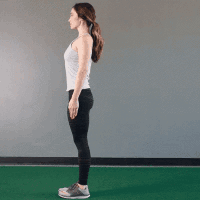
- Stand upright next to a wall or chair for support.
- Bend one knee, bringing your heel towards your buttocks.
- Hold your ankle with the same side hand, gently pulling it closer to your body.
- Keep your knees together and push your hips forward slightly.
- Hold for 15-30 seconds and switch to the other leg.
Straight Leg Raises
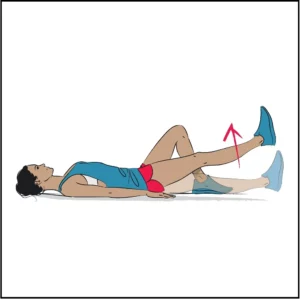
- Lie down on your back with one knee bent and the other leg straight.
- Tighten the muscles in your thigh and raise the straight leg to the height of the opposite knee.
- Hold for a moment, then slowly lower the leg.
- Perform 10-15 repetitions and then switch legs.
Wall Sits
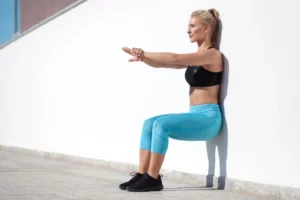
- Stand with your back against a wall.
- Slowly slide down until your knees are bent at a 45-degree angle.
- Ensure your knees are directly above your ankles.
- Hold the position for 10-30 seconds, then slowly slide back up.
Clamshells

- Lie on your side with legs stacked and knees bent at a 90-degree angle.
- Keeping feet touching, raise your upper knee as high as you can without moving your lower leg.
- Pause, then return to the starting position.
- Complete 10-15 repetitions, then switch to the other side.
Step-Ups

- Stand in front of a step or low platform.
- Step up with your right foot, then bring up your left foot.
- Step down with the right foot, followed by the left.
- Repeat 10-15 times, then switch the leading foot.
Hamstring Curls
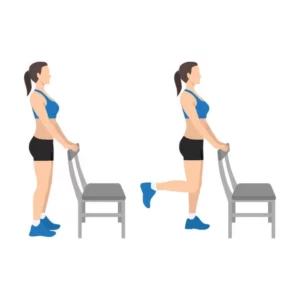
- Stand upright holding onto a chair or wall for balance.
- Slowly bend one knee, bringing the heel up towards your buttocks.
- Hold for a moment, then slowly lower your foot back down.
- Repeat 10-15 times on each leg.
These exercises can help strengthen the muscles around the knee and offer relief from kneecap pain.
Surgical Interventions and When They’re Needed
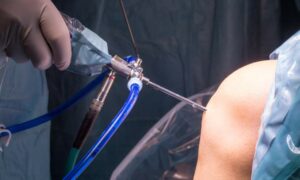 While many individuals with kneecap pain find relief through non-surgical treatments, there are situations where surgical treatment might become the most suitable or even necessary choice. So, here’s a look at common scenarios and surgical treatment associated with kneecap pain:
While many individuals with kneecap pain find relief through non-surgical treatments, there are situations where surgical treatment might become the most suitable or even necessary choice. So, here’s a look at common scenarios and surgical treatment associated with kneecap pain:
- Severe Cartilage Damage: When the cartilage under the kneecap is severely damaged, a procedure called a chondroplasty might be recommended. In this, damaged cartilage is removed, allowing for smoother movement of the kneecap over the joint.
- Kneecap Realignment: For those whose pain is due to a misaligned kneecap, a lateral release or medial patellofemoral ligament (MPFL) reconstruction might be recommended. These procedures aim to correct the tracking of the kneecap.
- Kneecap Fractures: If the kneecap has fractured, surgery might be necessary to realign and fix the broken parts, often using pins, screws, or wires.
- Tendon Repair or Reconstruction: In cases where the tendons around the kneecap are torn or stretched, surgical repair or reconstruction might be necessary to restore function and reduce pain.
- Arthroscopy: This minimally invasive procedure allows surgeons to view inside the knee joint using a small camera. It’s useful for both diagnosing and treating a range of knee issues. Loose fragments of bone or cartilage, for example, can be removed during arthroscopy.
- Knee Replacement: In extremely severe cases, where the joint damage is extensive and other treatments have proven ineffective, a total or partial knee replacement might be recommended. This involves replacing damaged parts of the knee with artificial components.
Deciding to undergo surgery is significant, and you should consult closely with an orthopedic surgeon. They can provide detailed insights into the potential risks, benefits, and expected outcomes of the procedure.
Conclusion
Kneecap pain can be a hindrance, limiting your daily activities and reducing your quality of life. However, understanding the causes, exploring the various treatment avenues, and proactively seeking solutions can lead to a successful recovery journey. Remember, every individual’s experience with kneecap pain is unique, and finding the right treatment might require a blend of therapies. Thankfully, professional guidance is just a click away. If you’re experiencing knee pain, consider reaching out to the experts. Physical therapy for knee pain at PhysioMantra can provide the personalized care and treatment you need. Don’t endure the pain any longer; book an online physical therapy session today.



